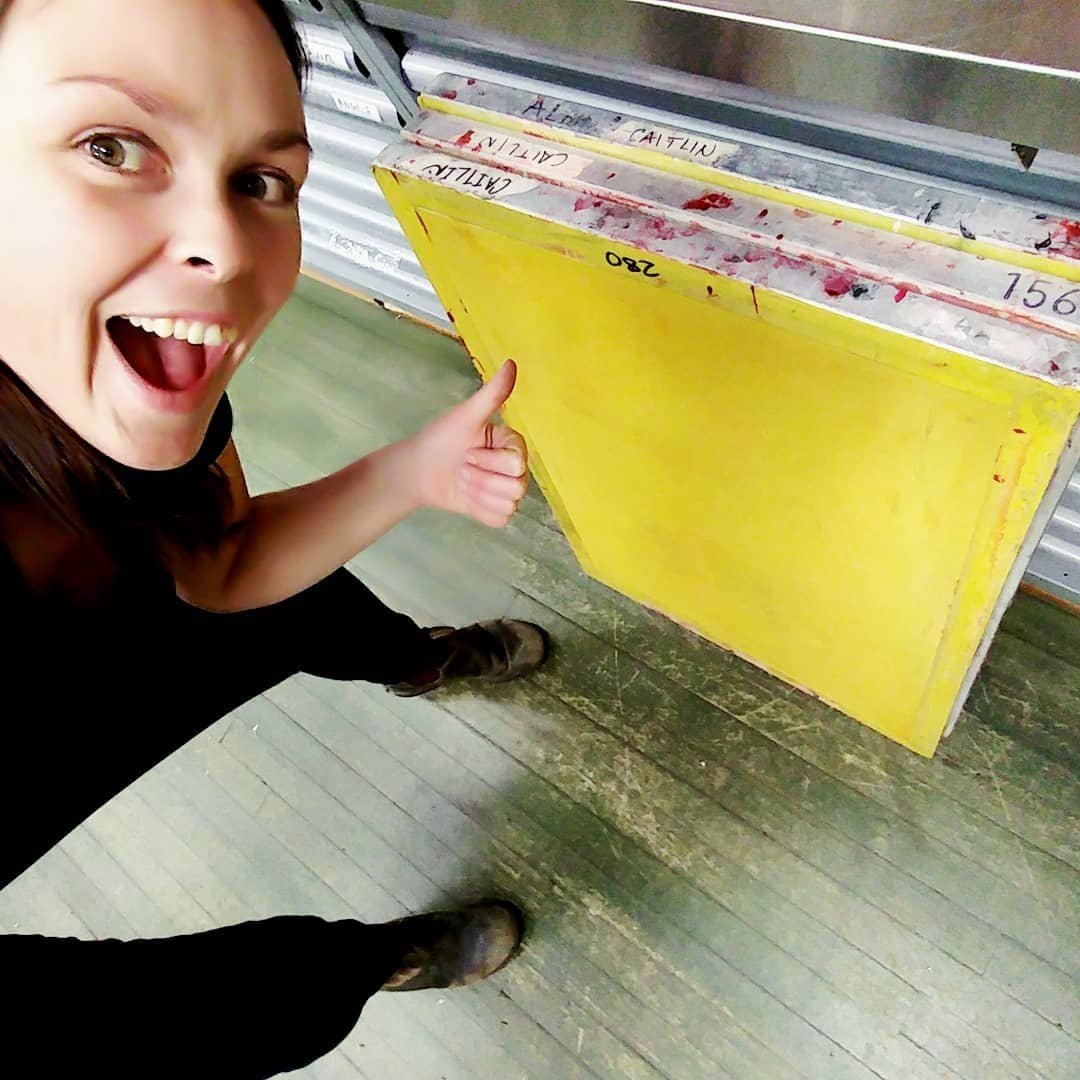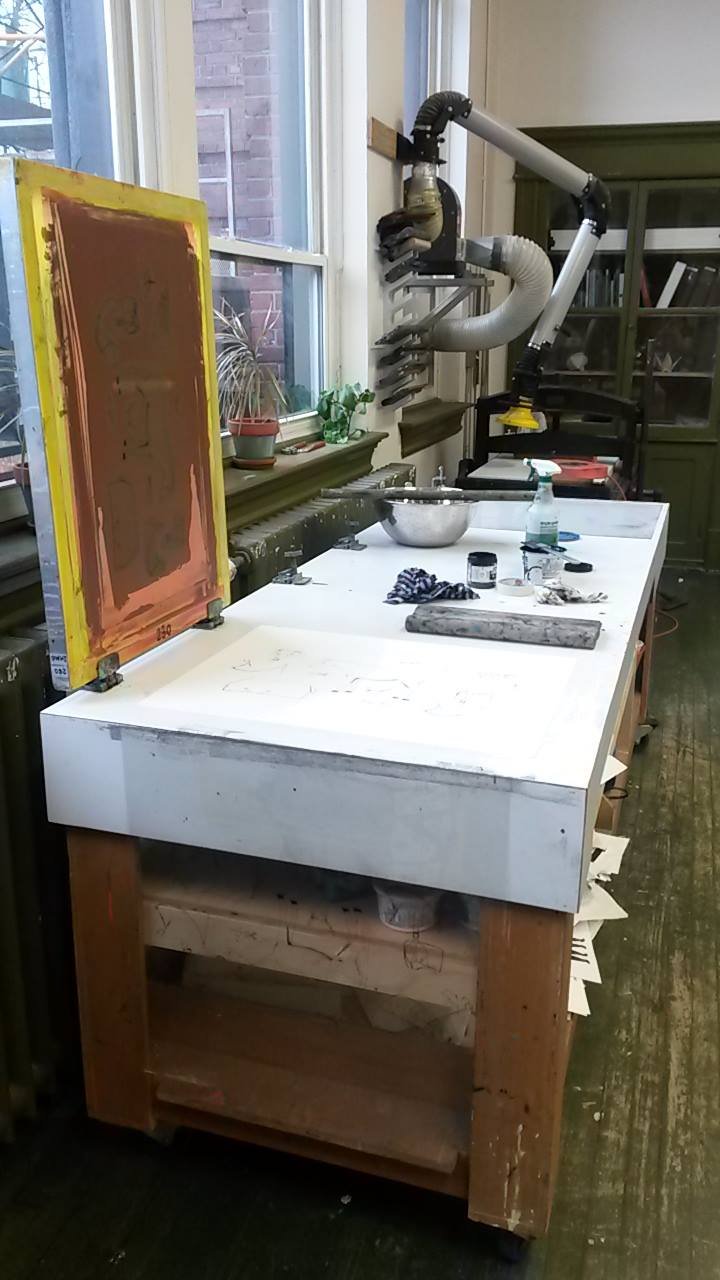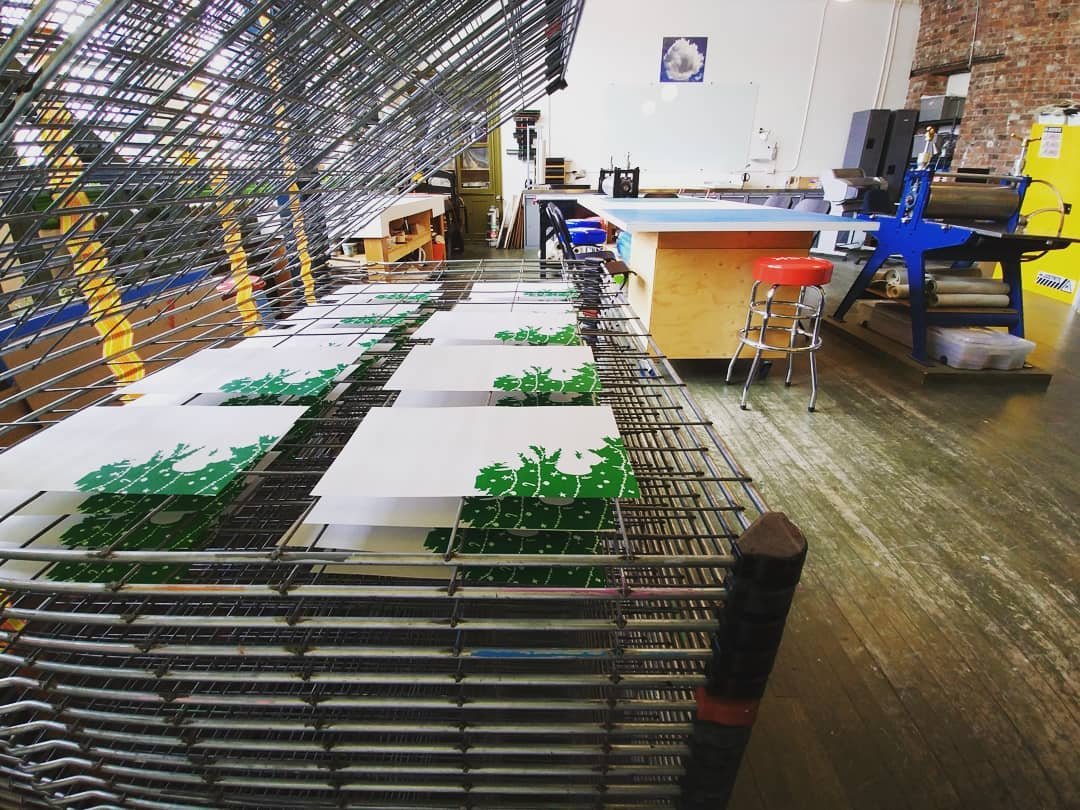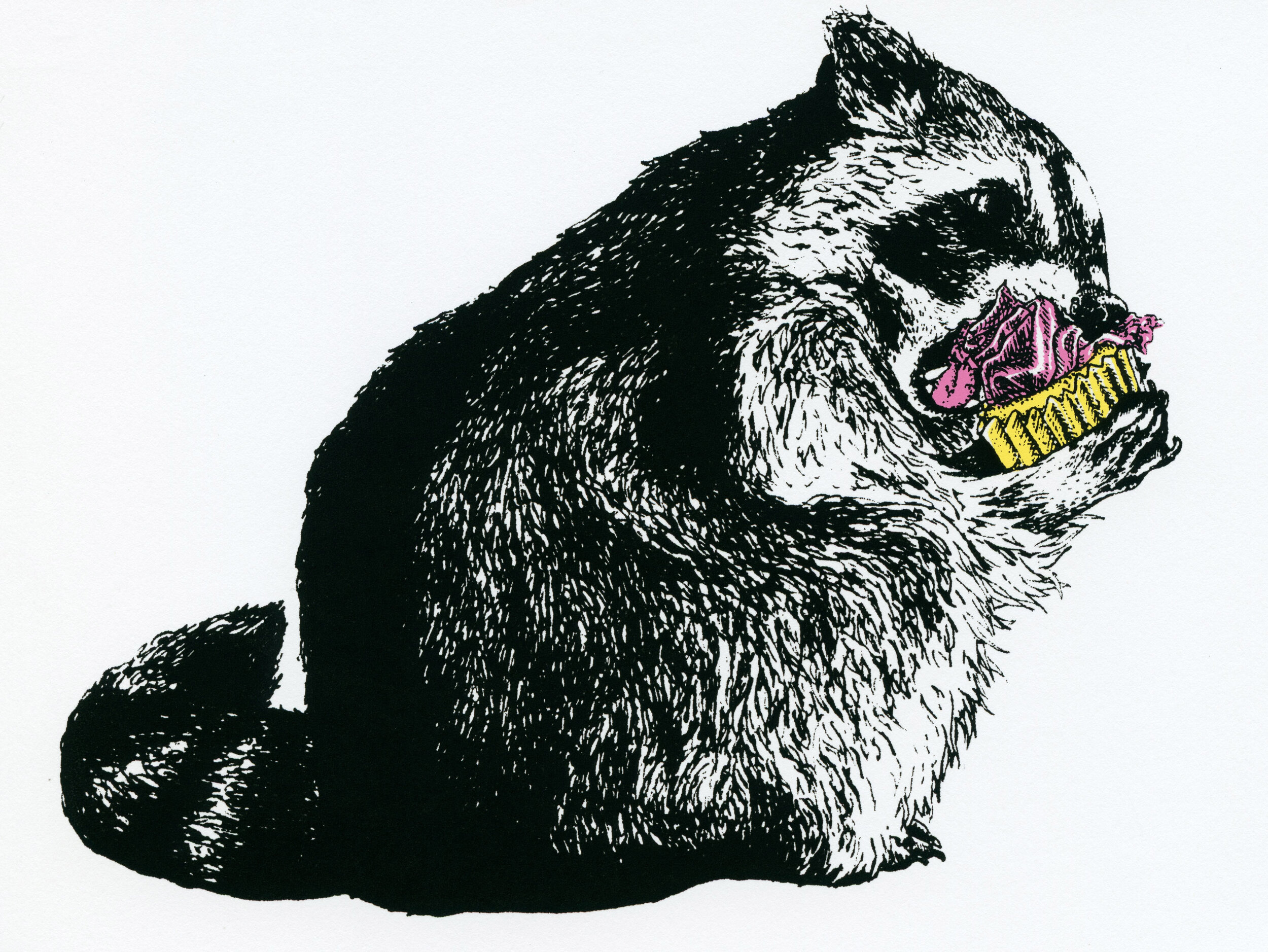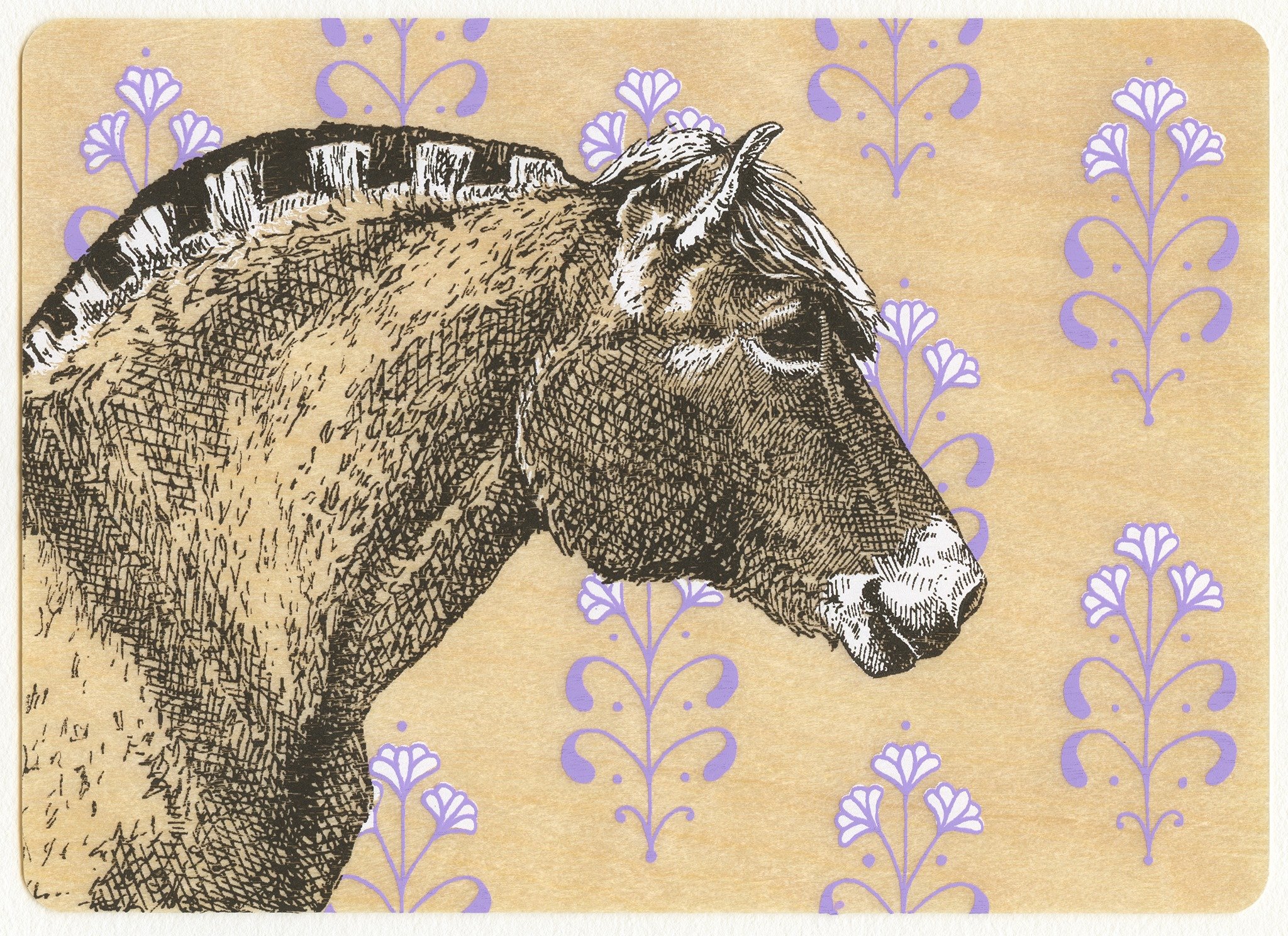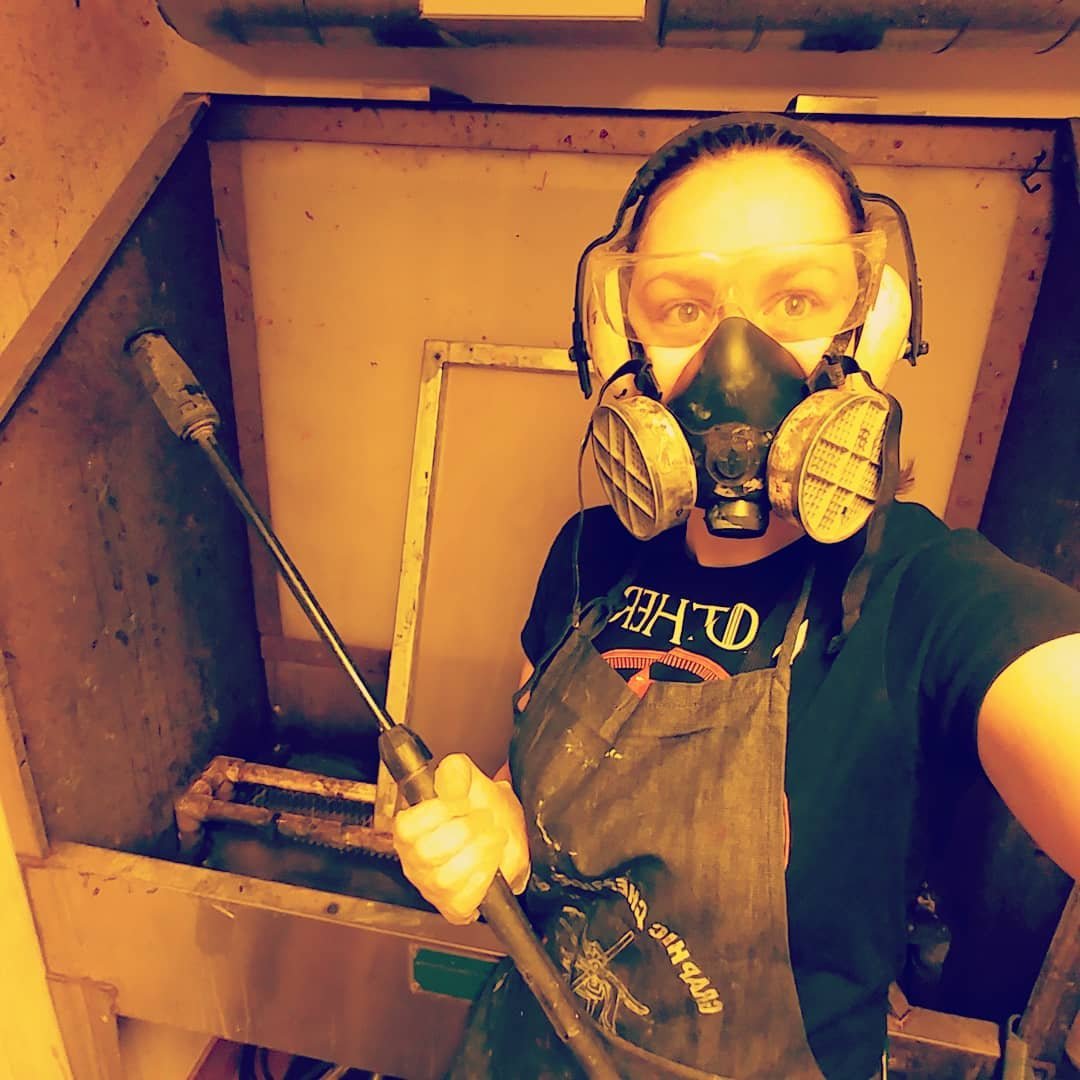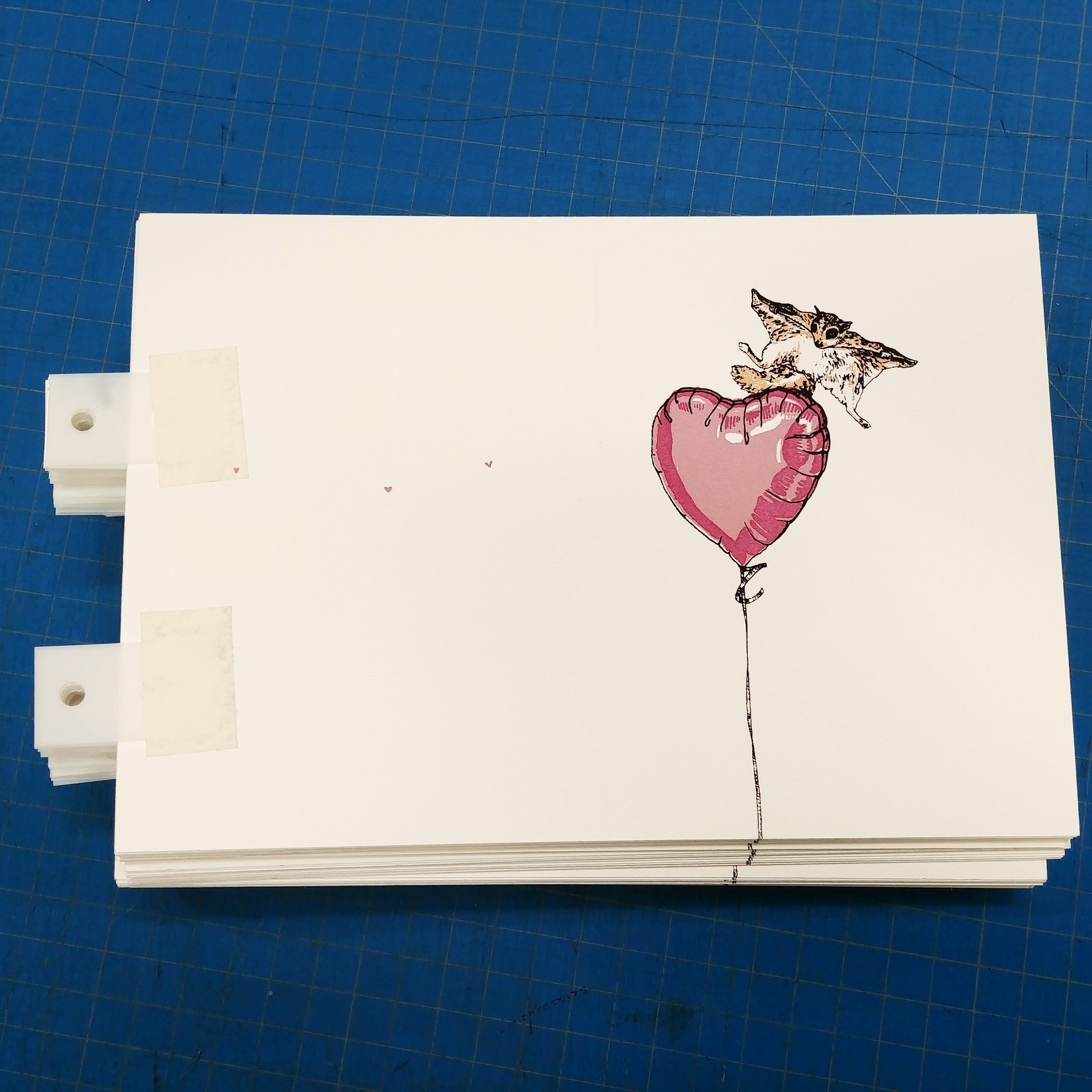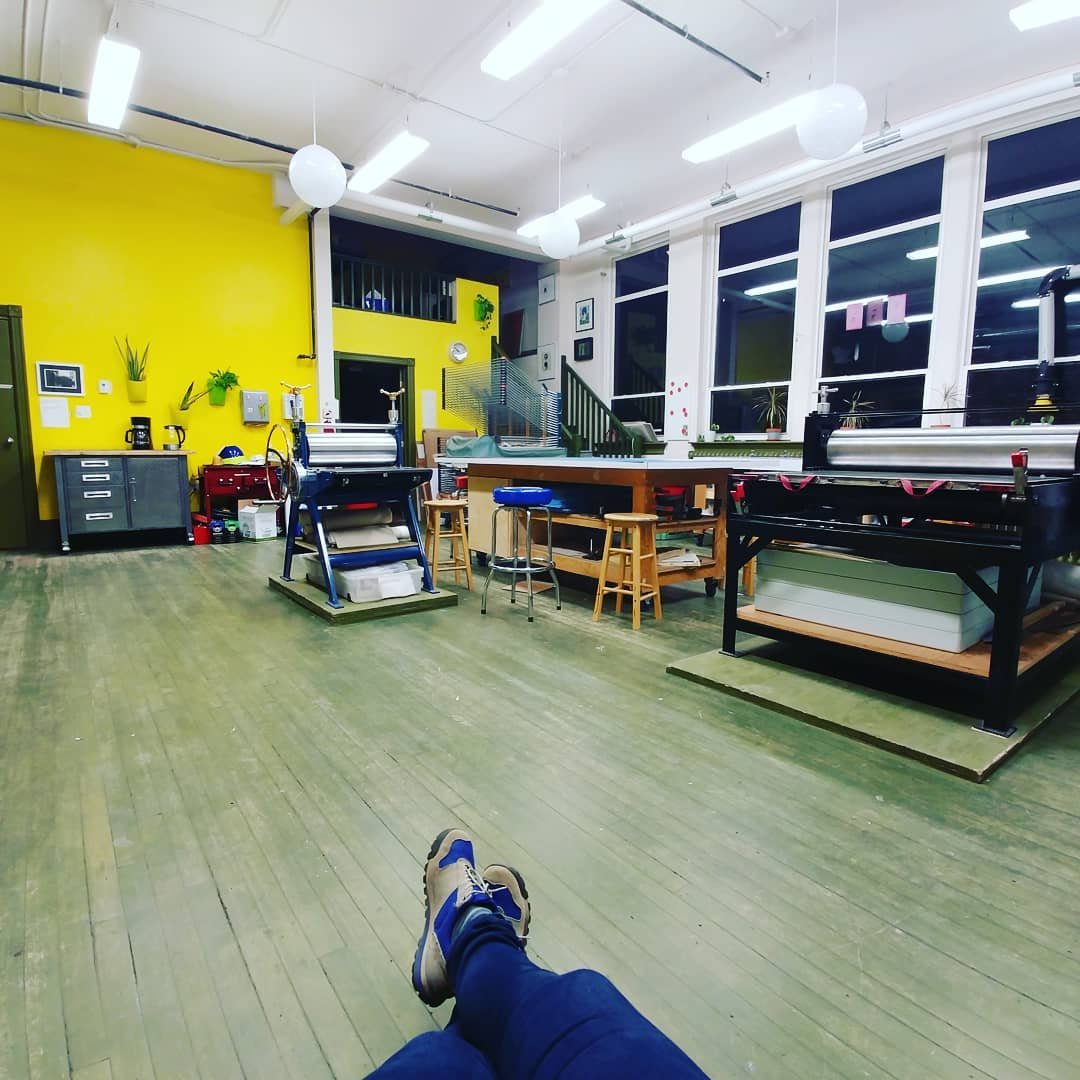What is a silkscreen print?
Silkscreen printing, or screen printing, utilizes a polyester screen as a matrix to facilitate stenciling techniques. Originally silk was used, hence the term silkscreen printing.
In this process, the printmaker creates a stencil on their silkscreen matrix by blocking areas of the screen, either by hand painting with a screen filling medium and/or by using photographic techniques. The polyester “screen" of the matrix is stretched tight across the frame and can be washed and reused many times. Its thread count is high enough for ink to sit on top of the screen, yet low enough to allow ink to be forced through with a squeegee. During the printing process, dragging the squeegee across the screen to push the ink through the stencil is called “pulling” the print. Once the print has been pulled, the screen must be “flooded” to protect any ink from drying in the stencil and ruining the screen while the printmaker removes the fresh “pull” (the recently printed paper) and replaces it with a new sheet of paper. To flood the screen, the artist simply lifts it off the paper, then uses the squeegee to spread the ink over the stencil without actually pushing it through.
When printing an image with multiple colours, the printmaker must create an individual stencil for each colour and print them in separate layers. Each layer must align perfectly in order to the print to be included in the edition. This alignment process is referred to as “registration”, and there are different techniques a printmaker can use to facilitate it.
Silkscreen printing, like most printmaking methods, has industrial roots. It was employed by ancient cultures to decorate walls, textiles, and even ceramic pieces. We can still find evidence of industrial screen printing today on t-shirts, cereal boxes, posters, and more. If you ever notice four blocks of colour on the edge of your newspaper or packaging with the letters, "CMYK”, that item has been screen printed by a machine with industrial techniques. The C stands for cyan, M for magenta, Y for yellow, and K for key (the black and final layer that completes the image). Some silkscreen printmakers employ this technique by hand in the studio, utilizing excellent registration techniques and mixing their ink with the perfect amount of transparency for the CMYK stencils to layer perfectly when the image is complete.
Silkscreen didn’t step into the fine art world until the 1960’s; a transition accredited to Eduardo Paolozzi and made famous by Andy Warhol. Today, it is perhaps the most popular method of printmaking among artists, valued for its diverse possibilities and efficient editioning process.
I use silkscreen printing in my own work, most notably when creating my hand printed greeting cards. I love the combination of thick, bold colours and fine lines I can employ together to create my image. I love the speed of the printing process, and the suspense of not knowing what my image will look like until it magically appears after the final layer is printed. The rhythm of pulling, flooding, and lifting the screen to expose your image feels like active meditation; much like running or cycling (but thankfully with far less cardio!).
I create my prints at Atelier Imago, a printmaking studio here in Moncton, New Brunswick. It’s a fantastic community of local printmakers, and the reason I moved to Moncton. Silkscreen is definitely the most popular method of printmaking at Imago, although a few of us specialize in other techniques.
Want to see some of the silkscreen process in action? Check out my Instagram profile and watch my “screen prep” and “printing cards” story highlights!
Intro to Monotype: Testing the Gel Press
Our local art store, The Art Shack, has made me their official new product tester! I was so honoured to be chosen for this and thrilled to be given a monotype printing matrix for my first product to test.
The Gel Press looks like a clear jello jiggler, but in truth it’s a matrix for monotype printing. A matrix is a printmaking term for the surface you create your image on. Normally this matrix is used to create a group multiple identical images, which is known as an edition. As you may have guessed by the name, such is not the case for monotype printing.
Monotypes, also known as monoprints, are single prints made by applying ink to a matrix freehand (instead of engraving, etching, carving or creating a stencil on your matrix). Monotype is the only kind of printmaking that cannot produce multiple identical images. They’re a fun gateway print as one experiments with the differences between printmaking and other mediums.
The Gel Press is a washable, reusable matrix for monotype printing. It’s great fun to play with and is absolutely kid friendly. This is a great way to introduce printmaking to kids; it’s quick to work with, giving them immediate results as they discover how the medium works. There is no prep work required, no sharp objects needed (in fact you should avoid anything sharp on your Gel Pres); just slap on the ink and print! I’ve tried it with a few students and so far everyone loves it! It’s easily cleaned with water or soapy water, but it’s staticky and a bit sticky so be careful about getting dust and other particles on it while you’re printing.
I had a ton of fun playing with this and see a lot of potential in using this matrix for different types of projects, including mixed media experiments. I’m looking forward to testing it with more students as September classes begin!
What is a print?
The most common question I’m asked when I tell someone I’m an artist is, “what kind of art do you do?”
When I reply, “I’m a printmaker”, the most common reaction is a nod of feigned understanding.
Printmaking is the least known fine art medium, even though it has been sitting right under our noses for millennia. It has industrial roots, and was used to create everything from literature to wallpaper, long before the dawn of computers. The revolutionary invention of the letterpress is a more famous example of how printmaking has impacted history, but it’s played a huge role in the everyday for centuries. Propaganda posters, fashion catalogues, design; printmaking has had a hand in it all. It was even used to illustrate our cereal boxes!
But, what is it?
Printmaking is the process of creating multiple identical images, using what is called a “matrix”. No, we’re not talking about the Keanu Reeves movie. We’re talking about a flat surface that’s been manipulated to hold ink to create an image. The matrix can take many forms (I swear, we’re not talking about the Keanu Reeves movie!!) depending on what type of print is to be created. In the fine art world, a group of these identical images is called an “edition”. Each image in the edition is considered an original piece of art. Traditionally, the matrix is destroyed after the edition has been completed to ensure the integrity and value of the prints in the edition.
Hand pulled, fine art prints are often confused with industrially produced prints. The latter are high-quality copies of original images, yet not original pieces of art themselves, like the former. It can be hard to spot the difference without training, but there are a few dead giveaways:
The amount of prints. Hand pulled prints take time, and the matrix can only survive so many printings before it deteriorates. If a print is numbered in the hundreds, it is unlikely to be a fine art print.
The signature. Most industrially reproduced prints are copied from paintings and drawings. If you see a signature on the image itself and not below, this indicates that it is a copy of an original, not an original itself.
The quality. Does it look like a poster? Is the paper shiny, like a photograph? That’s likely because it’s been produced by a computer printer.
Printmaking is an intricate process and is definitely my favourite medium. I’ll be sure to talk about it more another day, but in the meantime, check out this quick little video about printmaking!
